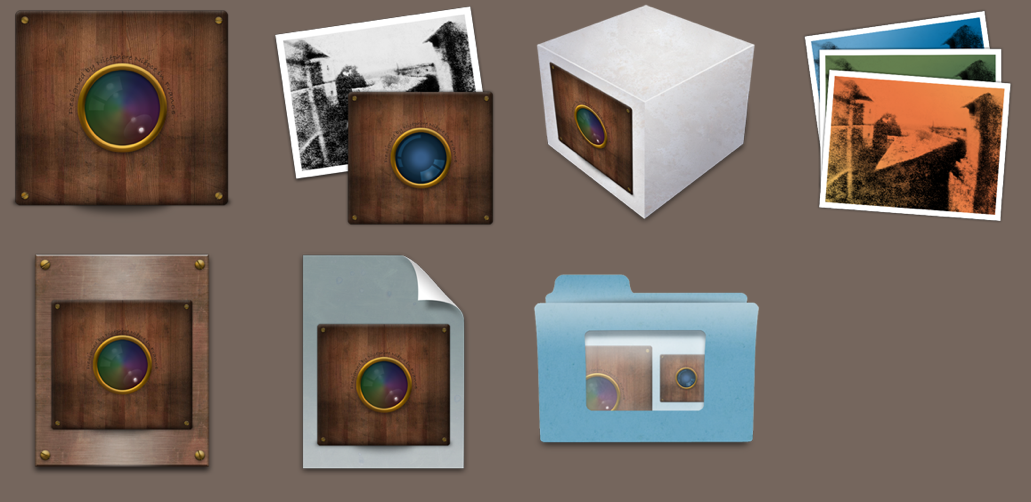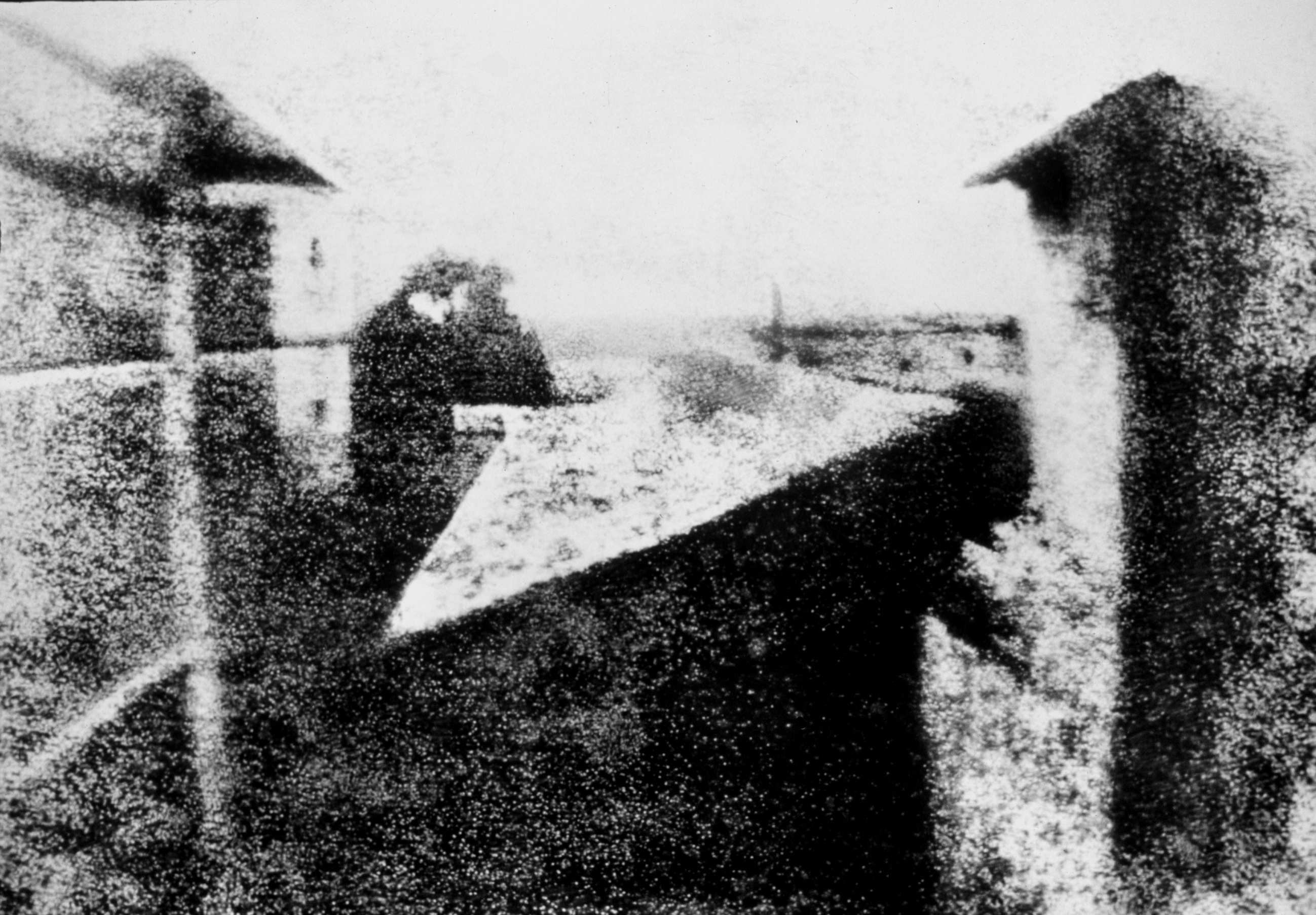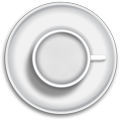9.9 KiB
| title | image | download | date | tags | redirect_from | toc | |||||
|---|---|---|---|---|---|---|---|---|---|---|---|
| Niépce's Camera Obscura And The History Of The First Photograph | ./Teaser-Camera-Obscura-Icons.jpg | /get/niepces_camera_obscura_by_kremalicious.zip | 2008-06-03 14:34:03+00:00 |
|
|
true |
These two desktop icons show the Camera Obscura as it was used by Nicéphore Niépce in an Aperture and iPhoto style and are intended as an homage to him. Nicéphore Niépce made it first possible to preserve an image taken with a camera obscura in 1826 or 1827 by using a special mixture of bitumen on a pewter plate, naming it Heliography.
This first preserved photograph View from the Window at Le Gras is the one you can see in the iPhoto icon contained in this package. The third icon is the folder icon I have created for this icon package.
Either just download the icons or read the exciting story about the First Photograph.
The story behind these icons
There's a fascinating story behind these icons which is nothing more than the story of the invention of photography. Grab yourself a cup of coffee or tea and sit back while reading this story. Of course, if you're bored already just grab the download package further down this page.
Nicéphore Niépce and The First Photograph
Niépce was a multitasking French inventor who became famous for his experiments trying to preserve the projected image inside of the Camera Obscura. The Camera Obscura uses a well known optical phenomenon which is known to mankind for quite a long time.
But it was just used either for entertainment or as an aid for drawing and painting. Painters were able to just redraw the projected image of the Camera Obscura.
In 1816 Nicéphore Niépce was able to produce a negative image by putting sheets of silver salts coated paper into the back of the Camera Obscura. When these sheets get in contact with daylight they blacken. Niépce called this procedure and the final negative "Retinas". But these negatives didn't stop fading and he wasn't able to fix them and they just disappeared. The Maison Nicéphore Niépce team have a nice little video showing the whole procedure on their website.
In 1822 he created a first non-fading negative contact print by utilizing a bitumen of Judea-coated glass plate. But this glass negative was later destroyed during an attempt to produce a positive image.
After some more tries and combining other elements in his procedure he was able to produce the famous First Photograph "View from the Window at Le Gras" in 1826 or 1827 by utilizing a bitumen of Judea-coated pewter plate and improved lenses from the Paris optician, Charles Chevalier. He called this procedure Heliography and the bitumen-coated pewter plate needed an exposure of eight or more hours!
By the way, in 2002 another picture made by Niépce was discovered which dates back to 1825. It was made in a process he called Heliogravure and it was an image of an (engraving) image (showing a man leading a horse). But since the scientific definition of the First Photograph is "the world's first permanent photograph from nature", View from the Window at Le Gras remains the first "real" photograph.
Because of his inventions he got in contact with the French artist, chemist and inventor Louis-Jacques-Mandé Daguerre and they became officially partners by the time of 1829 (14 December). At that time, Daguerre already was famous for his impressive Dioramas. They were both experimenting a lot to produce preserved images in less time. In June 1832 both invented a process called the Physautotype. This process utilized a distillate of lavender oil as the photosensitive agent and produced images in fewer than 8 hours.
But Niépce died suddenly in 1833 and instead of him his partner Louis-Jacques-Mandé Daguerre became famous with his Daguerreotype process in 1839. Finally Daguerre was named and praised as the inventor of photography along with his competitor William Fox Talbot.
But in 1952 Niépce's lost image View from the Window at Le Gras was discovered and since then he has to be named along with Daguerre and Talbot when speaking of the invention of photography. And we can learn that the invention of photography wasn't an act of one particular genius but a decades long process with many smart people involved.
If you're interested in all the different processes and techniques used by Niépce and Daguerre you can browse the Invention of Photography section on the website of Maison Nicéphore Niépce.
Finally let me say that this is just a brief description of Niépce's discoveries and photographic inventions in general. If you're interested I've provided some more resources for you to dive into this topic after the next paragraph.
Now switch back from historical learning to Icon Design.
References in the icons
The Camera Obscura seen in my icon set is a drawing of the replica of Niépce's Camera Obscura which you can find in Chalon-sur-Saône, France in Niépce's house. The Maison Nicéphore Niépce is a museum today, where they try to reproduce Niépce's procedures. And this isn't as easy as it seems with our shiny new 21st century technology.
The photography you can find in the iPhoto icon is the First Photograph "View from the Window at Le Gras", produced as a Heliography and dated to 1826 or 1827.
And finally, if you know the Aperture and iPhoto icons then you may have noticed the references to these applications too (just compare the lenses).
Sources and more informations on Nicéphore Niépce
Maison Nicéphore Niépce The home of Nicéphore Niépce in Saint-Loup-de-Varennes, France which is a museum today. It houses the replica of Niépce's Camera Obscura which was the inspiration for these icons and it was the view out of this house which became the First Photograph/Heliography.
The First Photograph In-Depth historical article about the First Photograph and Niépce's life in general by the University of Texas at Austin
Musée Nicéphore Niépce When in France you have to visit this museum in Chalon sur Saône where they have a Niépce and a Daguerre room.
Nicéphore Niépce on Wikipedia If you're more into un-referenced facts (Citation needed)
The Daguerreian Society: Daguerreian texts Massive 19th and 20th century text archive of The Daguerreian Society about the daguerreotype
Daguerre and the Invention of Photography Brief description of Daguerres role in the invention of photography process by The Metropolitan Museum of Art
Download and enjoy
This icon package was exclusively announced first on MacThemes and you can download it from the Goodies section on this website or directly via this link:
In addition to these icons you can download the associated wallpapers for your desktop or your iPhone.
How to use these icons
These desktop icons are free for your personal and non-commercial use. They were intended to be replacement icons for Apple's Aperture and iPhoto applications. Of course, you can use it for every other application instead or use the folder icon for your picture collection.
The easiest way to change and apply icons in Mac OS X involves the awesome application Candybar from Panic Software. In case you don't have it you can change your icons by following these steps:
To replace the icon of either an application, file or folder on Mac OS X simply ctrl + click (or right-click) on the desired application, file or folder and click "Get Info". Leave the Get Info dialog open and browse to an icon from this package inside the Mac folder. There you have three folders with the different icons applied to them. Now simply ctrl + click (or right-click) on the desired folder with the icon applied to it and click "Get Info". Now click on the icon in the upper left corner so it has a subtle shine around it noticing you it's selected. Now copy the icon by hitting command + c or choose Edit > Copy from the menubar. Make the dialog active we have opened in the first step by clicking on it and select the image in the upper left corner and hit command + v or choose Edit > Paste from the menubar. Now the desired icon should have been applied to the new folder.
Legal
These desktop icons are free for you personal and non-commercial use. All other usage of this copyrighted material require my written permission.
Final Words
Congratulations! You finally arrived at the end of my article. There's a good chance that your coffee or tea cup is now empty. But before making your next coffee you should share this article on your favorite social website. Your vote is highly appreciated! After you've finished voting and making your next coffee or tea you could subscribe to my RSS-Feed or buy me my next coffee.




